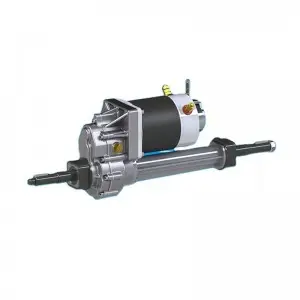When it comes to auto mechanics, many terms and components may sound familiar to us. One such component is the transaxle, which plays a vital role in the function of modern vehicles. In this article, we’ll explore what a transaxle is, what it’s used for and why it’s so important.
What is a transaxle?
A transaxle is the combined transmission and differential arrangement found in many front-wheel drive and all-wheel drive vehicles. It is the vital link between the engine, gearbox and drive wheels. The word “transaxle” is derived from the combination of the words “transmission” and “axle,” highlighting its innovative design that combines these two basic components.
Purpose of the transaxle
The main purpose of a transaxle is to transmit power from the engine to the wheels, enabling the vehicle to move forward or backward. It does this by utilizing a series of gears and shafts to optimize the torque delivered to the wheels. In addition, the transaxle also offers different gear ratios, allowing the driver to adjust the speed of the vehicle according to the driving conditions.
Components of the transaxle
A typical transaxle is made up of several key components, including the transmission, differential, final drives and half shafts. Let’s briefly look at each of these components:
1. Transmission: The transmission within the transaxle is responsible for converting the engine’s rotational power into usable torque to the wheels. It does this by shifting gears, utilizing gear combinations specific to the vehicle’s speed and load requirements.
2. Differentials: Differentials are present in all modern vehicles and allow the drive wheels to spin at different speeds when cornering. It distributes torque between the wheels while compensating for changes in travel distance, ensuring smooth cornering and preventing wheel spin.
3. Final Drives: The final drives are the last set of gears inside the transaxle housing, which then transmits power to the wheels. The gears in the final drives determine the vehicle’s overall gear ratio, affecting acceleration, top speed and fuel efficiency.
4. Halfshafts: Halfshafts connect the final drives to the individual wheels, transferring power from the transaxle to each wheel assembly. This enables the wheels to spin and propel the vehicle forward or backward.
The Importance of the Transaxle
The implementation of a transaxle offers several important advantages over a separate transmission and rear axle system in a rear wheel drive vehicle. Some key benefits are:
1. Improved weight distribution: By combining the transmission and differential into one unit, the overall weight distribution of the vehicle is significantly improved. This results in better handling, enhanced stability and improved traction, especially in front- or all-wheel-drive configurations.
2. Space efficiency: Integrating the transmission and differential into the transaxle creates more space in the engine compartment. This extra space allows automotive designers to optimize the vehicle’s interior layout for increased passenger and cargo capacity.
in conclusion
In summary, the transaxle is a key component in many modern vehicles, responsible for transferring power from the engine to the wheels. By combining the functions of the transmission and differential, not only weight distribution and space efficiency are improved, but overall vehicle performance and handling are enhanced. Understanding the importance of transaxles helps us understand the complex engineering behind our everyday vehicles.
Post time: Jun-19-2023


